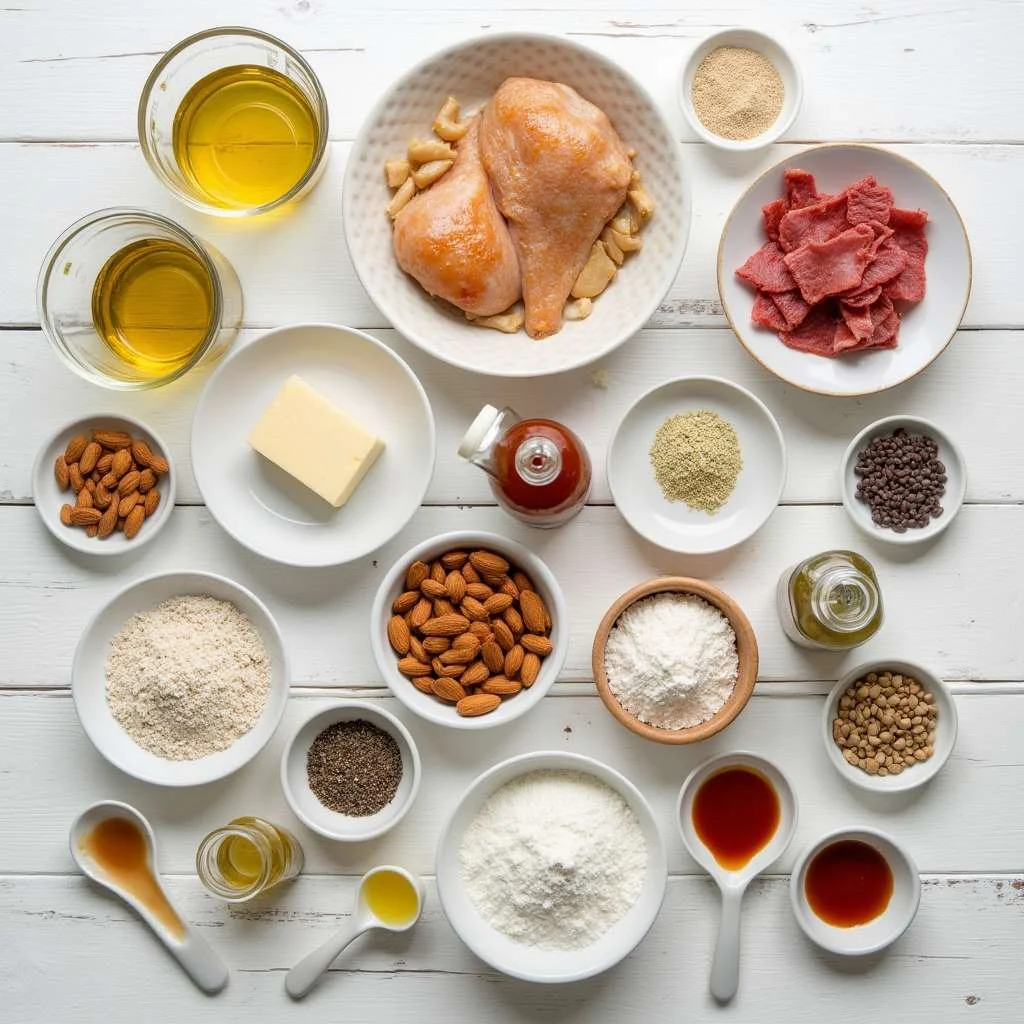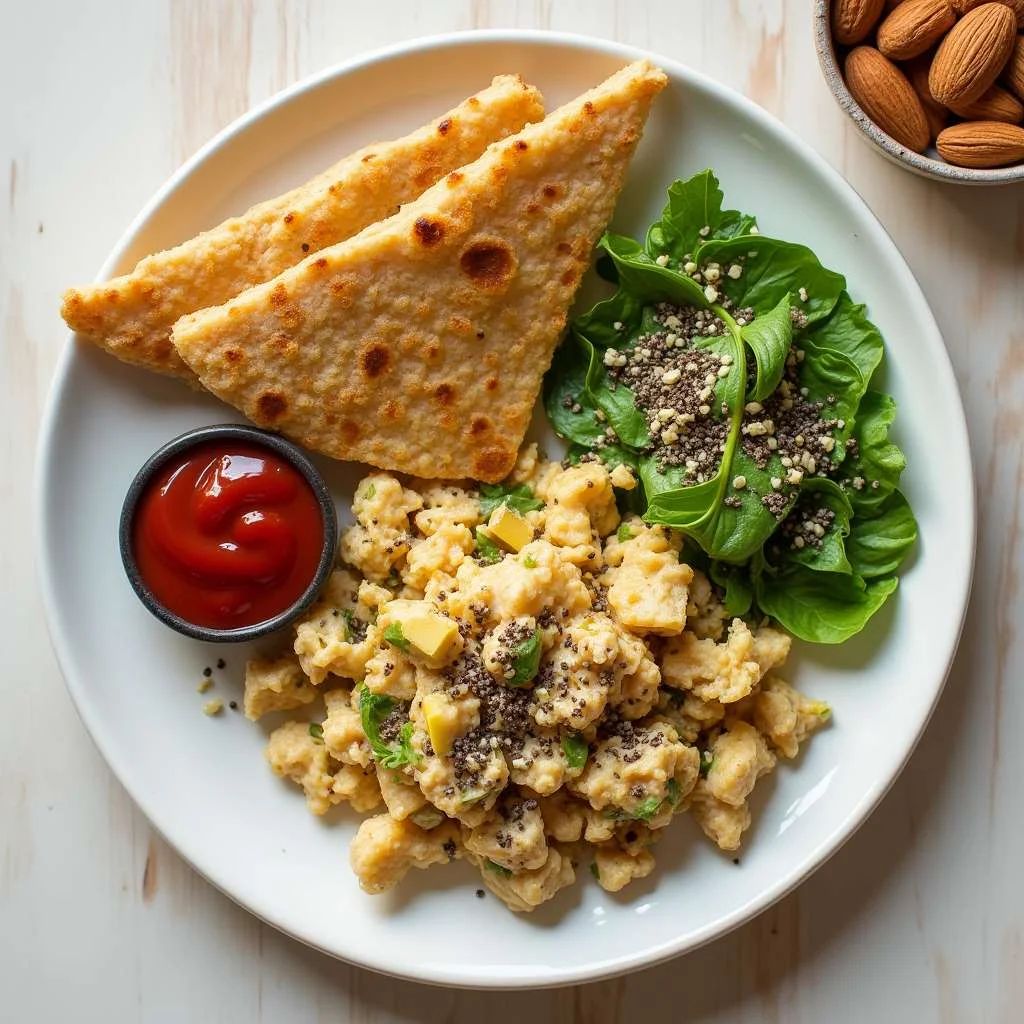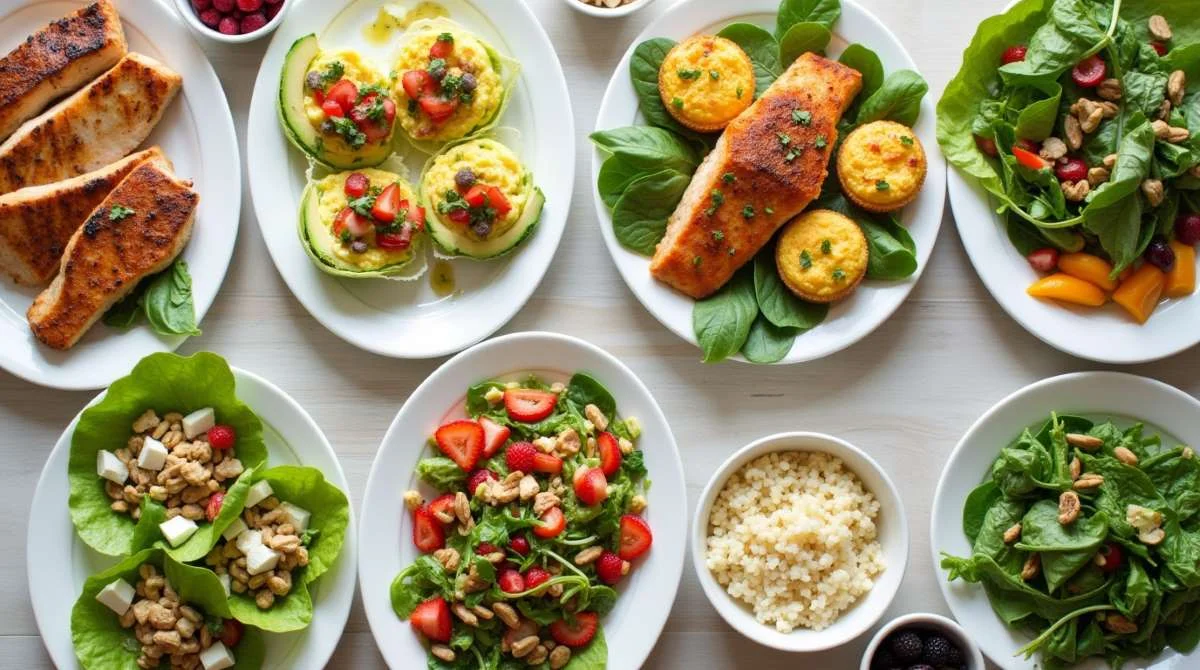Food That’s Low in Carbs: How to Enjoy Eating Without Guilt
Are you tired of feeling restricted and unsatisfied on your low-carb journey? You’re not alone. Many of us struggle with the balance between healthy eating and actually enjoying our meals. The good news is that food that’s low in carbs doesn’t have to be bland, boring, or leave you feeling deprived.
As a nutritionist who’s helped hundreds of clients transition to lower-carb lifestyles over the past 8 years, I’ve discovered that sustainable low-carb eating isn’t about restriction—it’s about finding delicious alternatives that satisfy both your taste buds and nutritional needs.
In this comprehensive guide, we’ll explore everything from selecting the right low-carb ingredients to preparing mouthwatering meals that will make you forget you’re even on a special eating plan. We’ll cover selection tips, preparation methods, flavor enhancements, and answer your most pressing questions about low-carb eating.
Table of Contents
Why This Food That’s Low in Carbs Works
Making the switch to food that’s low in carbs can transform your relationship with eating, and here’s why this approach is so effective:
- Uses everyday ingredients you can find in any grocery store
- Focuses on natural, whole foods rather than processed “diet” products
- Provides steady energy throughout the day without crashes
- Offers flexibility to fit various lifestyles and dietary preferences
- Helps reduce cravings for sugary, high-carb foods
- Supports weight management goals without constant hunger
Choosing the Right Low-Carb Foods
Best Foods for Low-Carb Success
The foundation of any successful low-carb approach is selecting the right foods. Focus on:
- Proteins: Chicken, beef, pork, fish, eggs, and tofu provide satiety without carbs
- Non-Starchy Vegetables: Leafy greens, broccoli, cauliflower, zucchini, and bell peppers offer nutrients with minimal carbs
- Healthy Fats: Avocados, olive oil, nuts, seeds, and fatty fish keep you full and satisfied
Shopping Tips
When shopping for food that’s low in carbs, keep these strategies in mind:
- Shop the perimeter of the grocery store where fresh foods are typically located
- Read nutrition labels carefully—carbs can hide in unexpected places
- Look for items with 5g of net carbs or less per serving for strict low-carb diets
- Choose full-fat dairy options over reduced-fat versions (which often contain added sugars)
Smart Substitutions
You don’t have to give up your favorite meals—just reinvent them:
- Cauliflower rice instead of traditional rice
- Zucchini noodles or spaghetti squash instead of pasta
- Lettuce wraps instead of tortillas or bread
- Almond or coconut flour instead of wheat flour
- Berries instead of high-sugar fruits
Ingredients & Prep


Pantry Essentials
Stock your kitchen with these low-carb staples:
- Oils and Fats: Olive oil, coconut oil, avocado oil, butter, ghee
- Proteins: Canned tuna, chicken, beef jerky, protein powder
- Nuts and Seeds: Almonds, walnuts, chia seeds, flaxseeds
- Flours: Almond flour, coconut flour
- Sweeteners: Stevia, erythritol, monk fruit
- Condiments: Mustard, hot sauce, mayo, sugar-free ketchup
Meal Prep Strategies
Preparing food that’s low in carbs becomes effortless with these prep techniques:
- Batch cook proteins for easy meal assembly
- Pre-cut vegetables for quick stir-fries and salads
- Make mason jar salads for grab-and-go lunches
- Prepare egg muffins for quick breakfast options
- Freeze portioned meals for busy weeknights
Flavor Enhancers
Maximize flavor without adding carbs:
- Fresh herbs like basil, cilantro, and rosemary
- Spice blends (check for added sugars)
- Citrus zest and juice for brightness
- Vinegars for acidity and depth
- Bone broth for richness in soups and sauces
Step-by-Step Low-Carb Cooking Instructions
Pre-Cooking Prep
Set yourself up for low-carb success:
- Plan your meals around a protein source
- Incorporate a variety of vegetables for nutrients and fiber
- Include healthy fats for satiety and flavor
- Season generously—food that’s low in carbs can handle bold flavors
- Prep ingredients in advance to streamline cooking
Cooking Methods
Different cooking techniques bring out the best in low-carb ingredients:
- Roasting: Enhances the natural sweetness of vegetables
- Grilling: Adds smoky flavor to meats and vegetables
- Sautéing: Quick and flavorful for weeknight meals
- Slow cooking: Creates tender, flavorful proteins with minimal effort
- Air frying: Achieves crispy textures without breading
Meal Assembly
Creating balanced low-carb meals is simple with this formula:
- Start with 4-6 oz of protein
- Add 1-2 cups of non-starchy vegetables
- Include 1-2 tablespoons of healthy fat
- Finish with herbs, spices, or a low-carb sauce
Portion Control
Even with food that’s low in carbs, portions matter:
- Use smaller plates to create visual satisfaction
- Listen to hunger cues rather than clearing your plate
- Remember that calorie-dense foods like nuts and cheese are easy to overeat
- Stay hydrated—thirst is often mistaken for hunger
Pro Tips for Perfect Low-Carb Meals
Avoiding Common Pitfalls
Make your low-carb journey smoother with these tips:
- Don’t fear fat—it’s essential for satiety and flavor
- Watch for hidden carbs in sauces, dressings, and processed foods
- Stay hydrated to avoid the “keto flu” when first reducing carbs
- Include enough fiber through vegetables and seeds
- Don’t rely too heavily on artificial sweeteners, which can trigger cravings
Essential Tools
These kitchen tools make low-carb cooking easier:
- Spiralizer for vegetable noodles
- Food processor for cauliflower rice
- Kitchen scale for portion control
- Good quality knives for vegetable prep
- Meal prep containers for make-ahead options
Storage & Meal Planning
Extend the life of your low-carb foods:
- Store cut vegetables with paper towels to absorb moisture
- Freeze portions of cooked proteins in broth to prevent drying out
- Label everything with dates to ensure freshness
- Plan meals around perishable ingredients to reduce waste
- Create a rotating menu of favorite meals to simplify planning
Flavor Variations
Global Inspirations
Food that’s low in carbs can draw from cuisines worldwide:
- Mediterranean: Olive oil, lemon, herbs, and grilled proteins
- Mexican: Cumin, chili, lime, and avocado (skip the rice and beans)
- Asian: Ginger, garlic, coconut aminos, and sesame oil
- Indian: Curries with coconut milk, turmeric, and garam masala
- Italian: Tomato sauces, herbs, and zucchini noodles
Dietary Adaptations
Customize for specific needs:
- Keto: Increase fats, keep carbs under 20g daily
- Paleo: Focus on unprocessed foods, avoid dairy
- Vegetarian: Emphasize plant proteins like tofu and tempeh
- Dairy-Free: Use coconut cream and nutritional yeast for creaminess
- Nut-Free: Rely on seeds and avocados for healthy fats
Family-Friendly Options
Make food that’s low in carbs appealing to everyone:
- Taco bars with lettuce wraps and regular shells
- Cauliflower crust pizzas with varied toppings
- Burger night with regular and lettuce-wrapped options
- Stir-fries with a side of rice for family members not eating low-carb
- Low-carb desserts that everyone can enjoy
Serving Suggestions
Elevate your low-carb meals with these pairings:
- Serve proteins with roasted vegetable medleys
- Create colorful salads with varied textures and proteins
- Offer dipping sauces made with healthy fats for added satisfaction
- Pair spicy dishes with cooling cucumber or jicama slices
- Include a small portion of berries for a sweet finish to meals
Beverage pairings that complement food that’s low in carbs:
- Light juices or hard seltzers in moderation
- Sparkling water with citrus
- Herbal teas or coffee with heavy cream
- Low-carb smoothies made with unsweetened almond milk
FAQs
Can I eat fruit on a low-carb diet? Yes, but choose lower-carb options like berries, and watch portions. A cup of strawberries contains about 11g of carbs, making it a reasonable choice for most low-carb plans.
How do I handle dining out while eating low-carb? Most restaurants can accommodate low-carb needs. Order grilled proteins with vegetable sides, ask for sauces on the side, and don’t hesitate to substitute starchy sides with extra vegetables.
Will I feel hungry eating food that’s low in carbs? Initially, you might experience hunger as your body adjusts. Ensure you’re eating enough protein and healthy fats, which provide lasting satiety. Most people report reduced hunger once adapted to low-carb eating.
How quickly will I see results from eating low-carb foods? Many people notice changes within the first week, particularly in water weight and bloating. More sustainable fat loss typically begins after 2-3 weeks of consistent low-carb eating.
Reach more low carb meals by visitig the following:
- Low Carb Meals: 8 Protein-Packed Lunch Recipes You’ll Love
- Low Carbohydrate Diet Meal Plan: 14 Days to Better Energy
Conclusion
Embracing food that’s low in carbs doesn’t mean embracing a life of culinary boredom or constant cravings. With the right ingredients, preparation methods, and mindset, you can create satisfying, delicious meals that support your health goals while still bringing joy to your table.
Remember that sustainability is key—find the low-carb approach that works for your body, preferences, and lifestyle. It’s not about perfection but about making better choices most of the time.
Ready to transform your relationship with food? Start with just one low-carb meal today and build from there. Join thousands of others who have discovered that eating well and enjoying food aren’t mutually exclusive!
How did you find our Post?
There are no reviews yet. Be the first one to write one.

